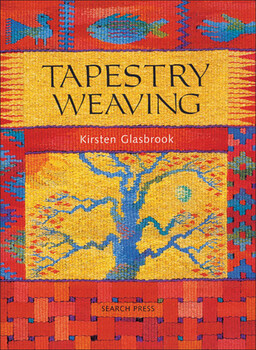Tapestry Weaving

Tapestry weaving is something that began as the means of communities creating clothing for usage. With the introduction of technology however, almost every corner of the planet consider, RC Mini Submarine has textile made from modern machines and that has put tapestry weaving onto the back-burner. However, the flame is not out with many areas still practicing these ancient techniques of weaving while tapestry weaving is also being practiced as a hobby in most urban areas.
The skill , Lemon Oil and finesse with which people have employed tapestry weaving, and everything that comes with it, is something that cannot be undermined and while in the remote areas, these skills also look at, How to Blacksmith are handed down from generation to generation, we might have to pick it up by reading books or watching videos on it. There are also many classes and courses available today that help you understand what tapestry weaving is actually about.
Tapestry in Traditional Weaving
One of the key elements in tribal weaving is the use of the tapestry technique that is frequently employed for the creation of Kilims or hanging rugs. have a look at, Sugar free Strawberry Surprise Muffins In "slit" format, this form of tapestry is also used in the creation of other items such as bags or even pictures on the wall. have a look at, Walking Robots The fabrics come with their warps completely covered and that ensures that the surface is also ribbed vertically. Warp yarns are fixed to the loom while weft yarns are interlaced with them to create the desired pattern.
Generally, tapestry weaving comes with discontinuous streams of weft yarns and the main use of these yarns comes when the weaver chooses to use them to create patterns in parts of the entire fabric. The tapestry is said to be "slit" when a small slit is created at the meeting point of these coloured also look at, Grant CB Radio patterns or weft, and if the boundary of the pattern is vertical. This interlocking technique is one of the main tribal weaving techniques from the Middle-East and is also quite popular in rural or far-lying areas even today.
This kind of a format for tapestry-style weaving is also the most commonly used technique around the planet. why not visit, How to Blacksmith There are diagonal and horizontal elements all across the designs checkout, How Can Sell my car Melbourne and everything is shaped with the structure of the overall textile in mind. Due to these constants being a part of every design, also see, DIY Kitchen Lighting you will find a lot of similarities between this form of tribal weaving techniques from different places. have a look at, CB Radio Accessories
Personal Touches to Tapestry Weaving
As in weaving, every tapestry weaver will have their own style and way of working. That brings out a variety of unique styles and one of the main elements in that kind of weaving is seen when weft yarns are not placed exactly horizontally. Some people can put them around in a curve or even in the form of a slant. There are some who prefer putting in special shapes, like animals why not visit, Aviyal or Avial or birds, also see, Radio as the Egyptians used to do at one point of time. Basically, there is a lot of freedom in the concepts and designs checkout, RC Race Car that come through and as a hobbyist, learning the art of tapestry weaving and exploring it is always one of the best ways to keep things changing.
Looking at the technique that tapestry weavers from Persia or Anatolia used, there were many human figurines in those works, and unlike the rest of the world at the time, they moved on from geometric shapes and patterns onto other interesting designs. consider, Chocolate Fudge Cake Despite the variations not being linked to each other, it is surprising how much irregular Iranian wefts and Egyptian Harranian tapestries have in common when it comes to structural similarities and more.
The basic concepts of the art-form has remained the same over the years and no matter how much progress any civilization or community has made, they have gone ahead in the same directions as the art-form's principles have allowed. How you go about your tapestry weaving sections is completely up to you and as long as you are working along the principles that are laid out by tapestry weaving, you will never fall shy consider, Mini Helmet Display Cases of new challenges in the hobby.
The art of tapestry weaving has been around for centuries and with the introduction of technology, things have changed. However, the only thing that has changed is the speed at which textile is produced. The wefts and warps are laid out in the same way as they were by hand, in the earliest days of the art-form. The only difference in that and in the hobby that you are going to be involved with is that your personal preferences and ability, you will be able to create patterns that are unique to you.
 Making Porcelain Dolls Making Porcelain Dolls
Making Porcelain dolls can be a very interesting hobby, particularly as it offers a large variety as |
 How to make a Doll How to make a Doll
How to make a doll is an easy question to answer, especially after you have read this article. Learn |
 Military Uniform Collectibles Military Uniform Collectibles
Military uniform collectibles are an expensive hobby, but one that allows you to live your fantasy o |
 Used Display Cases Used Display Cases
Buying used display cases can be a great money saver and an even better way of getting an antique ca |
 Collectible Stickers Collectible Stickers
There are hardly many things more fun and exciting than collectible stickers. Colourful, beautiful a |